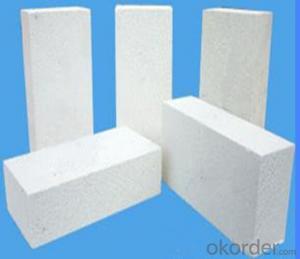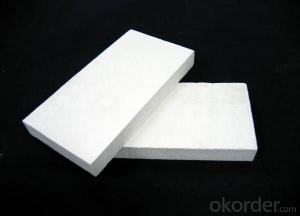Refractory JM Mullite Insulation Brick JM-23
- Loading Port:
- Shanghai
- Payment Terms:
- TT OR LC
- Min Order Qty:
- 10 m.t.
- Supply Capability:
- 1000 m.t./month
OKorder Service Pledge
OKorder Financial Service
You Might Also Like
Refractory mullite insulating refractory brick JM 23
Okorder series heat insulation brick
Okorder series thermal insulation brick is an effective, energy saving, low carbon, environmental protection advanced, according to the ASTM standard manufacturing products. Okorder series products are best Li Ning and insulation in all types of industrial furnaces in the metallurgical field, aluminum, petrochemical, electric power and glass ceramic materials. They can be used as part of the working layer of thermal insulation or non - melting. Products have been widely used in the following furnace, achieved satisfactory results.
Application of heat preservation brick
Metallurgical Industry: blast furnace, hot blast furnace, heating furnace, etc..
Petrochemical Industry: ethylene cracking furnace, hydrogen production furnace, primary reformer, heating furnace, etc..
Ceramic industry: roller kiln, kiln, etc..
Glass industry: glass furnace regenerator, etc.
Carbon industry: carbon furnace, etc..
Aluminum electrolysis industry: aluminum reduction cell, etc.
Other industries: tunnel kiln, shuttle kiln, etc..
Advantages of heat insulation brick
Low thermal conductivity: more porosity will bring good thermal insulation effect, energy saving.
High crushing strength: high crushing strength, volume stability.
Low heat storage: small heat storage to absorb more heat, energy-saving effect is obvious.
Gao Chundu: iron, alkali metal impurity content is low.
The precise size: Brick size processing precision, special shape cutting and grinding, accelerate the brickwork.
Insulating brick picture
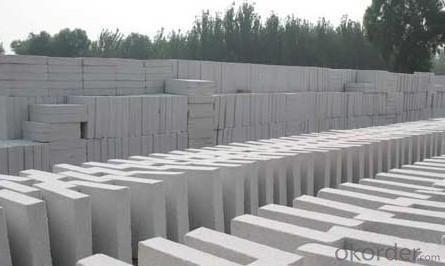
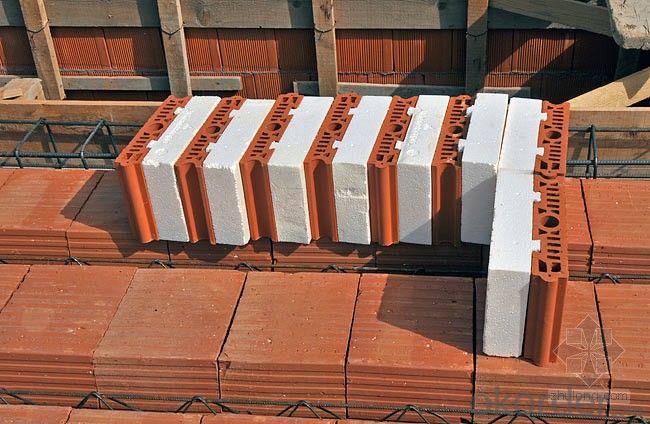
Common problem solutions
1. What products do you have?
We have all kinds of refractory bricks, refractory casting materials, mortar, cement, ceramic fiber products, etc..
Or you can browse our products to choose what you need.
2. How to control product quality?
With strict quality control system throughout the material selection and production process, we have the quality of refractory materials and ceramic fiber products to meet customer requirements.
From the selection of raw materials, the quality of our control to start. The quality certificate of the raw material is required, each batch of the products are to be tested in the use of the forward line. In the production process, the quality control by the workers, and then each piece of classification, and through the quality supervision and inspection.
3. Can you give me a brief introduction to the application of your product?
My company is mainly engaged in refractories in the steel, cement, glass, ceramics, petrochemical, electric power and other industries.
4. What information do you need if I need you?
In order to select the right products, we will provide us with information, such as the United States, technical data, order quantity, product application, etc..
If you have any questions, please contact us.

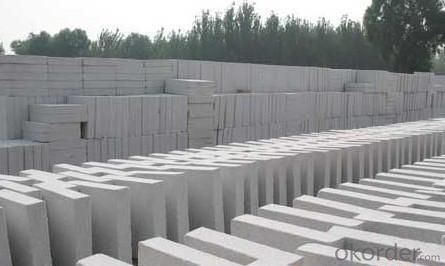

- Q:Can insulating fire bricks be used in the construction of heat shields?
- Certainly, heat shields can indeed be constructed using insulating fire bricks. These bricks are specifically designed to withstand elevated temperatures and possess exceptional thermal insulation properties. Their ability to effectively absorb and distribute heat makes them an ideal choice for the creation of heat shields, which serve to safeguard against excessive heat and mitigate thermal damage. In industries that involve high temperatures, such as steel, glass, and ceramics, insulating fire bricks are frequently employed. Moreover, their lightweight nature and ease of handling make them a practical option for constructing portable or easily installable heat shields. In summary, insulating fire bricks are a reliable and appropriate material for constructing heat shields in a diverse range of applications.
- Q:What are insulation bricks for? Do not use high-rise buildings on the ah?
- Heat preservation and heat insulation, that depends on the design of the drawing
- Q:Are insulating fire bricks suitable for insulation in petrochemical plants?
- Yes, insulating fire bricks are suitable for insulation in petrochemical plants. Insulating fire bricks are made from lightweight materials with high insulating properties, such as ceramic fibers or lightweight refractory aggregates. These bricks are designed to have low thermal conductivity, which allows them to effectively reduce heat transfer and provide insulation in high-temperature environments. In petrochemical plants, where processes involve the handling of flammable and hazardous materials, maintaining proper insulation is crucial for safety and efficiency. Insulating fire bricks can withstand high temperatures and provide excellent thermal insulation, helping to reduce heat loss and minimize energy consumption. Furthermore, insulating fire bricks are resistant to chemical corrosion, making them suitable for use in petrochemical plants where exposure to corrosive chemicals is common. These bricks are also durable and have good mechanical strength, allowing them to withstand the harsh conditions in petrochemical plants. Overall, insulating fire bricks are an ideal choice for insulation in petrochemical plants due to their high-temperature resistance, excellent thermal insulation properties, chemical resistance, and durability.
- Q:Do insulating fire bricks have good insulation performance at high temperatures?
- Insulating fire bricks possess remarkable insulation capabilities when exposed to elevated temperatures. These bricks are meticulously crafted to endure exceedingly high temperatures and deliver exceptional thermal insulation. Constructed from lightweight materials with minimal thermal conductivity, they adeptly confine and retain heat within furnaces, kilns, and similar high-temperature contexts. This insulation attribute aids in minimizing heat dissipation and upholding a steady temperature within the structure. Insulating fire bricks are extensively utilized across various industries including ceramics, metallurgy, glass production, and heat treatment, where the preservation of high temperatures and thermal efficiency is of utmost importance.
- Q:Can insulating fire bricks be used in steam boilers?
- Yes, insulating fire bricks can be used in steam boilers. They are designed to withstand high temperatures and provide thermal insulation, making them suitable for steam boiler applications.
- Q:Can insulating fire bricks be used for insulation in power generation plants?
- Yes, insulating fire bricks can be used for insulation in power generation plants. Insulating fire bricks are specially designed to have low thermal conductivity, making them ideal for applications that require high-temperature insulation. Power generation plants often operate at high temperatures and require efficient insulation to minimize heat loss and improve energy efficiency. Insulating fire bricks are made from lightweight materials such as clay, alumina, and silica, which have excellent insulating properties. These bricks can withstand high temperatures ranging from 1260°C to 1790°C (2300°F to 3250°F), depending on the specific composition and grade. This makes them suitable for the extreme heat conditions typically found in power generation plants. Furthermore, insulating fire bricks are resistant to thermal shock, which can occur when there are rapid temperature changes. This is particularly important in power generation plants where the heating and cooling processes can be frequent and intense. The ability of insulating fire bricks to withstand thermal shock helps to ensure the longevity of the insulation, reducing the need for frequent replacements and maintenance. In addition to their excellent thermal insulation properties, insulating fire bricks also offer other advantages. They are lightweight compared to traditional refractory bricks, making them easier to handle and install. This can save time and labor during construction or maintenance activities in power generation plants. Overall, insulating fire bricks are a reliable and effective choice for insulation in power generation plants. They provide high-temperature insulation, thermal shock resistance, and easy installation, making them an ideal solution for improving the energy efficiency and performance of power generation facilities.
- Q:Can insulating fire bricks be used for insulation in aluminum smelters?
- Insulating fire bricks are capable of being utilized for insulation in aluminum smelters. Crafted from unique lightweight materials possessing exceptional insulation properties, these bricks are an optimal choice for high-temperature insulation needs. With aluminum smelters operating at exceedingly elevated temperatures, insulating fire bricks possess the ability to effectively endure and retain heat, thereby averting heat loss and enhancing energy efficiency. Moreover, these bricks exhibit resistance to thermal shock, a prevalent phenomenon in smelting procedures, rendering them highly appropriate for employment in aluminum smelters. Additionally, insulating fire bricks can establish a protective barrier, mitigating the risk of heat damage to neighboring structures and equipment. Consequently, implementing insulating fire bricks for insulation in aluminum smelters can augment thermal efficiency, diminish energy consumption, and guarantee a secure and proficient smelting process.
- Q:How do insulating fire bricks affect the overall carbon footprint of a structure?
- Insulating fire bricks can significantly reduce the carbon footprint of a structure. These bricks have higher thermal insulation properties compared to traditional bricks, which means they can better retain heat and reduce the need for excessive heating or cooling. By improving energy efficiency and reducing the consumption of fossil fuels, insulating fire bricks help to lower the carbon emissions associated with the structure's operation. Additionally, their longer lifespan and recyclability contribute to further environmental benefits by reducing waste generation and the need for frequent replacements, ultimately minimizing the overall carbon footprint of the structure.
- Q:Can insulating fire bricks be used for insulation in industrial chimneys?
- Yes, insulating fire bricks can be used for insulation in industrial chimneys. Insulating fire bricks are specifically designed to withstand high temperatures and provide excellent insulation properties. They are made from lightweight refractory materials that have low thermal conductivity, allowing them to effectively retain heat and prevent its transfer to the surroundings. This makes them ideal for use in industrial chimneys, where insulation is crucial to minimize heat loss and improve energy efficiency. Additionally, insulating fire bricks are also resistant to chemical corrosion, making them suitable for the harsh and corrosive environments typically found in industrial chimneys.
- Q:Can insulating fire bricks be used in high-temperature ducts?
- Insulating fire bricks can indeed be used in high-temperature ducts. These bricks are specially designed to withstand extreme temperatures, making them an ideal choice for applications where heat retention and insulation are crucial. With their low thermal conductivity and high resistance to thermal shock, insulating fire bricks can effectively trap heat within the ducts, preventing any loss of energy and ensuring efficient heat transfer. Additionally, their lightweight nature makes them easy to install and handle, while their durability allows them to withstand the harsh conditions of high-temperature environments. Overall, insulating fire bricks are a reliable and effective solution for insulating high-temperature ducts.
1. Manufacturer Overview |
|
|---|---|
| Location | |
| Year Established | |
| Annual Output Value | |
| Main Markets | |
| Company Certifications | |
2. Manufacturer Certificates |
|
|---|---|
| a) Certification Name | |
| Range | |
| Reference | |
| Validity Period | |
3. Manufacturer Capability |
|
|---|---|
| a)Trade Capacity | |
| Nearest Port | |
| Export Percentage | |
| No.of Employees in Trade Department | |
| Language Spoken: | |
| b)Factory Information | |
| Factory Size: | |
| No. of Production Lines | |
| Contract Manufacturing | |
| Product Price Range | |
Send your message to us
Refractory JM Mullite Insulation Brick JM-23
- Loading Port:
- Shanghai
- Payment Terms:
- TT OR LC
- Min Order Qty:
- 10 m.t.
- Supply Capability:
- 1000 m.t./month
OKorder Service Pledge
OKorder Financial Service
Similar products
New products
Hot products
Related keywords
